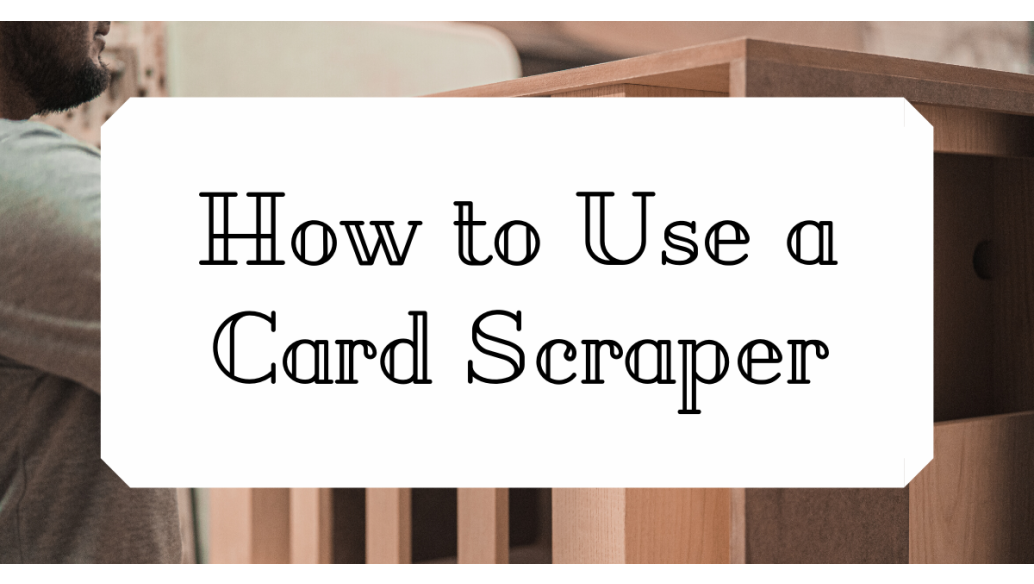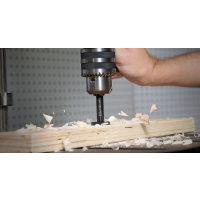Who likes sanding? Bueller? Bueller?
Sanding is time-consuming, loud, dusty, and it requires patience that sometimes eludes the best of us. That said, you can’t put finish on a wooden object without prepping the surface. So what kind of tool exists to make this easier?
If you haven’t heard of the card scraper, or cabinet scraper, you’re in luck. Sure, there’s more elbow grease in this method, but it’s a great alternative to sanding, especially if you like the idea of building a piece with as few power tools as possible.
There are a few simple steps to get your scraper ready for use.
To start, you’ll need flat edges on your scraper. This means you’ll need to sharpen your scraper so the sides are flat and the bottom edge of the scraper is square to those edges. Holding your scraper in a vise, draw a fine, flat file across the edge while applying even pressure. If there’s a hook already on the scraper, now is the time to take it off as you prepare the new one.
When you’re happy with the results from the file, you need to remove the file marks. You can use a low grit sharpening stone (#320) for this. Rub each side of the scraper on the stone as though you are polishing it. You’ll want to be careful with your stone though — don’t ding or nick in the surface with your scraper. You can prevent that by using the narrow side of your stone.
Water stones are ideal here because the removal of material from the scraper will create a slurry that is abrasive and helps in the cutting process. At the end of this process you’ll have two square sides and a flat bottom on the scraper. Now you’re ready to create the hook.
At this point, you might be thinking that with two square sides and a flat bottom edge, the scraper would be sharp and ready to use. Technically, you’re correct — but you won’t produce fine shavings without what is called a hook. This step in the process produces a rounded edge on the steel that allows controlled cutting of the material. Again, hold the scraper in the vise and use what is called a burnisher to form the hook.
A burnisher is a steel rod that has been highly polished and is made from material that is much harder than the scraper. There are several available from online retailers (some versions even use a tungsten carbide rod which will produce great results).
Use medium pressure to draw the burnisher across the scraper at about a 10-degree angle. This will produce a hook that will create fine shavings and leave what feels like a finely sanded finish on the timber. Hooks greater than 10 degrees will remove more material; however, at a certain point the hook will roll over on itself and produce a blunt edge. If at first you don’t succeed — don’t be too hard on yourself! Hand skills take time to learn and master. With practice you’ll learn what works for you and produces the finish you want. Patience goes a long way here.
With your newly burnished hook you’re ready to work. To use the scraper, slightly bow it with your thumbs and push it across the surface of your material. It’s similar to a planing action. When your hook is just right and your technique is refined, you’ll produce shavings.
Even though using a card scraper requires a little more care and attention, a finely scraped table top is just as beautiful as a power sanded one and carries the soul of the maker and the hands that crafted it.






